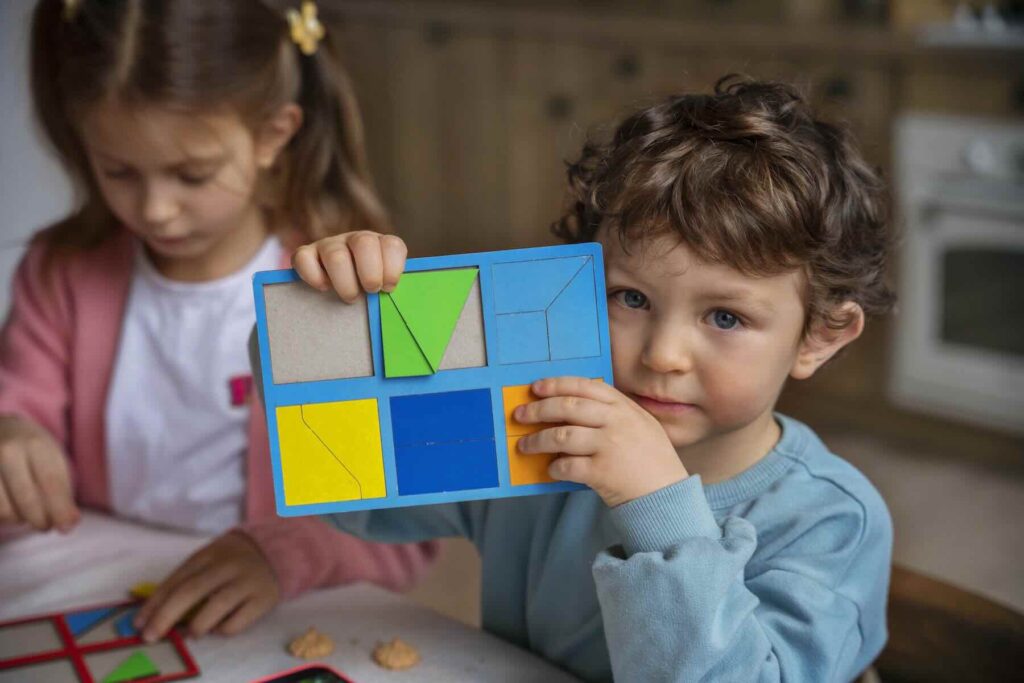Remember the stories about the Sphinx who challenged travelers with riddles? These weren’t just fun questions—they were logic puzzles. If you failed to solve them, you paid with your life.
Some believe that brain teasers originated in ancient Egypt. Long ago, philosophers may have created puzzles for future generations. In fact, some temple walls and pyramids have been found with mysterious inscriptions—possibly early logic games.
Today, people of all ages enjoy brain teasers. But why? And what makes them so useful for both kids and adults? Brain teasers are more than just fun.
They help develop thinking skills, attention to detail, and logical reasoning. They’re good for everyone—especially children, as long as the puzzles match their age.

Types of Brain Teasers
There are countless types of brain teasers. Some are word problems or logic puzzles, while others are hands-on toys.
There are toys you have to untangle, twist, unlock, pull apart, or reassemble like a mosaic. Even the classic sliding puzzle — called the "15 Puzzle" — is a brain teaser. Basically, any game or toy that makes you think is a brain teaser.
Although brain games have existed for a long time, they became really popular in the 19th century.
That’s also when many familiar puzzle types were created — including the world-famous Rubik’s Cube.

Best Puzzles by Age
2 to 5 years old
Montessori-style toys work well at this age. Think of boxes with shaped holes and matching pieces. Busy boards (or “activity boards”) are also great — they have little latches, zippers, buttons, and switches.
Adults may not consider them puzzles, but they help build logic and fine motor skills.
5 to 8 years old
This is a good age for simple logic puzzles and mazes. You can also introduce kids to puzzles that involve separating or untangling pieces. Simple riddles and logic games are perfect too.
9 to 12 years old
Now kids can handle more challenging puzzles—like the Rubik’s Cube or 3D Tetris-style games. They’re also ready for more complex logic and strategy-based problems.
And if you’re looking for more, check out our collection of math games for logical thinking and classic Soviet board games that the whole family can enjoy.

How to Get Kids Interested in Puzzles
Puzzles are meant to be fun. Don’t turn them into homework — let them stay a game.
Play together, celebrate small wins, and offer help when it’s needed. Kids need to feel successful and motivated to keep going.
And if a child learns to love brain teasers early on, solving them regularly can help protect their brain from age-related decline later in life.






